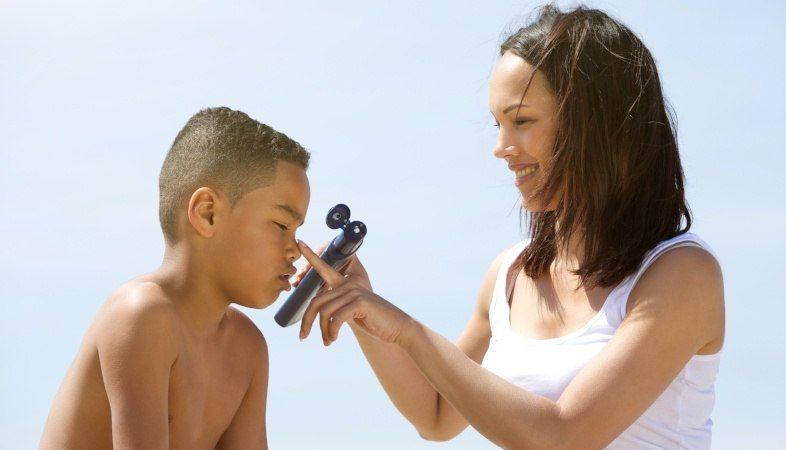July 12th, 2017 | 3 min. read

School’s out for the summer, and that means spending more time outside with kids. Keep your kids safe from the sun this summer with these children’s sunscreen guidelines:
Go into any drugstore and you’re sure to be overwhelmed by the sunscreen selection. Make sure to choose the right sunscreen for children by looking for these criteria:
Need help choosing the best sunscreen for your adult skin? Check out our article on choosing sunscreen for healthy skin.
Apply sunscreen at least a half hour before any time outdoors. Try to make sunscreen a part of your routine, so you don’t forget to apply it on short trips or overcast days, when harmful rays can still affect your child’s skin.

Sunscreen should not be applied to children under six months of age. Babies under six months should be kept out of the sun as much as possible.
If kids are swimming or getting sweaty at the playground, sunscreen should be reapplied every two hours, or after they get out of the water. Even if a sunscreen bottle says it is waterproof on the label, it just means it’s more water resistant - your safest option is to always reapply sunscreen after being in the water.
Even if your child is wearing a swim shirt, make sure to apply sunscreen all over their arms, legs and torso. It’s especially important to get the tops of their ears, feet, nose and hair part. For the face, an SPF stick can be the easiest way to apply sunscreen. Don’t forget to give their lips a coat of SPF-infused lip balm often.
Adults should use at least an ounce and a half of sunscreen lotion, but children often require about an ounce to completely cover the body. Think of the pour of a shot glass as a close approximation for adults, and a slightly smaller amount for kids. Sunscreen in lotion form is often better to apply on kids, because it’s thicker and easier to see missed spots. However, if you have a squirmy or sandy kid you can also use a sunscreen spray.
While routine sunscreen application is the best way to prevent sun damage to a child’s sensitive skin, there are other steps you can take for avoiding the sun's damaging rays:
Spending time outside is fun for the whole family. Safely have fun in the sun this summer by following these recommendations for children’s sunscreen application. By doing so, you’re protecting them from aging and skin cancer risks as adults.
Topics: